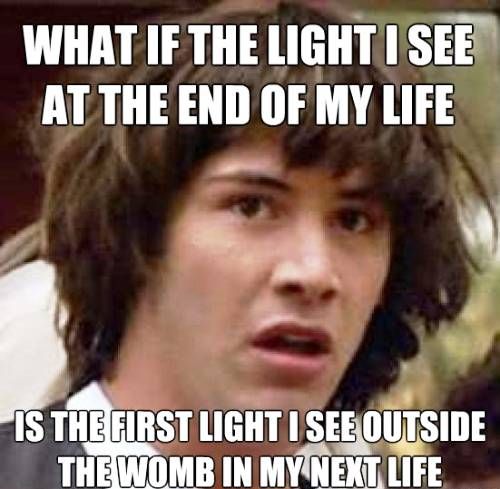As a young poet, I craved a question that would crack open the world. Everyday, I would wake up, literally, with the plan to create it. The world needed cracking—the world needed breaking—and I would dedicate my life to crafting this question.

By this time, I had devoured a lot of books, but my palate was not sophisticated enough to comprehend that the world does not burst from one question alone. No—the world collapses under the weight of a thousand questions, a million questions, presented persistently over time. One book can finally force a rupture, but no one question can sate the appetite for apocalypse on its own.
I enjoyed enough literature to appreciate my error; in this literature, I encountered questions that ruined my taste for anything lacking complexity:
- How can I plan my world in a sane and thoughtful way? (Homer’s Odyssey, Book 18)
- Is a single man in possession of a large fortune in want of a wife? (Jane Austen, Pride and Prejudice)
- Are all happy families alike, and are all unhappy families unhappy in their own way? (Leo Tolstoy, Anna Karenina)
- Is life full of sound and fury, signifying nothing? (Shakespeare’s Macbeth).
These questions, these stories, wrecked me, cracked me apart so that I could begin again.
So that I could begin again.
This is what apocalypse allows us to do: begin again.
I grew up in Southern California near the San Andreas Fault, which cracks California in two from Mexico to Mendocino.

I’ve witnessed the consequences of major earthquakes and lived through minor ones. When I was ten, I awakened in the dawn-dark as my bed swayed toward the center of my room. At twenty-two, I moved to Northern California, San Francisco, pulling into the city on October 18, 1989, one day after the Loma Prieta 6.2 earthquake. For the next several months, I commuted to my job at the Exploratorium in the Marina District, passing homes whose facades had fallen off, looking like giant devastated dollhouses.
In childhood, I dreamed of living in San Francisco because, when I visited with my family, I could not believe the combination of cold air, bright sun, colorful houses, the dramatic shoreline, the bridges cloaked in fog, the green carpet of Golden Gate Park. The year I lived there (1989-1990), I learned that despite the wreckage affecting the city and its inhabitants, life went on. Some days, I felt so lucky to live there, I’d pinch myself on my way to work.
In 1999, my job as a high school English teacher nearly destroyed me; the job demanded so much creative, critical and physical energy that I felt used up. Adding insult to my psyche’s injury, some of the faculty at my school liked to suggest that the arts were “insignificant.” During one English Department meeting, a colleague (a college counsellor) stated that “the Arts classes don’t count; the A’s are so easy, colleges just throw those grades out.” I felt like barking and retching and screaming hearing such trash talk: I had never struggled more in school than during the years spent earning my Masters of Fine Arts. What I did not say in that department meeting, and it’s hard to say even now, is that if a teacher finds it hard to grade creative work, then that teacher might want to leave higher levels of learning. Among my peers, I was known as “the creative teacher,” a reputation that for half of my colleagues meant I was of no serious account. The other half thought I might redeem the school.
Because I would give up a steady paycheck if I quit, I needed serious help deciding whether I should stay or go, even though I knew that if I stayed, I would lose my mind. Magically, I found the serious help I needed in Shakespeare’s Macbeth. Hecate, in Act 3.5, reprimands the weird sisters, demanding to know why they had trafficked with Macbeth at all, “a wayward son / Spiteful and wrathful, who, as others do / Loves for his own ends.” Nevertheless, Hecate allows the sisters to ruin Macbeth completely: “by the strength of their illusion / [they] Shall draw him on to his confusion. / He shall spurn fate, scorn death, and bear / His hopes ‘bove wisdom, grace, and fear / And you all know, security / Is mortals’ chiefest enemy.”
I left the security of that full-time teaching job in 2003.

Chrysalis, 2017






